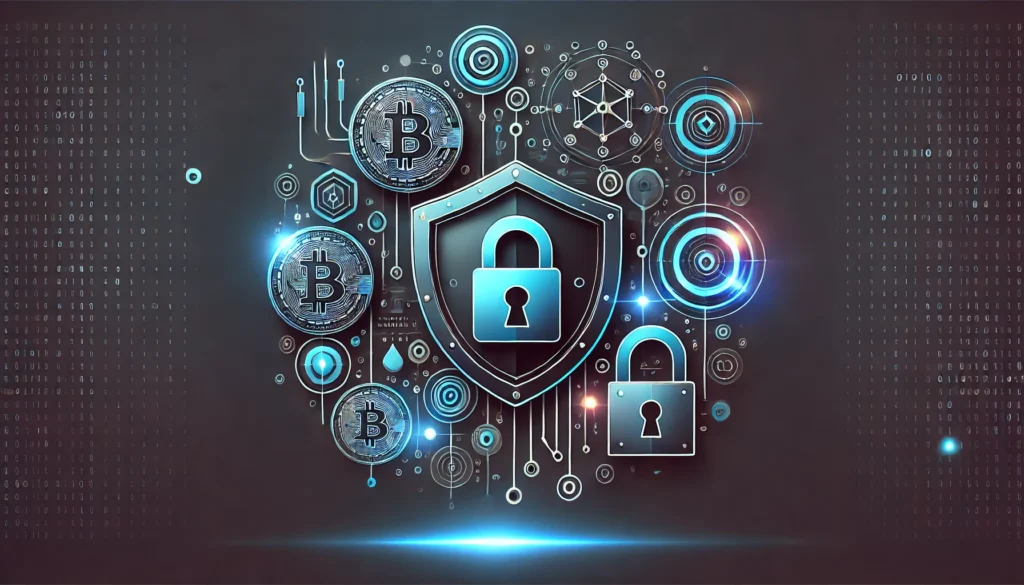How to Stay Safe in the Crypto World: Security Best Practices
The world of cryptocurrency offers exciting opportunities for investors, traders, and enthusiasts alike. However, the decentralized and largely unregulated nature of crypto also presents unique security challenges. From phishing scams to wallet breaches, crypto users must stay vigilant to protect their digital assets. In this guide, we’ll walk you through essential crypto security best practices to help you stay safe in the crypto world.
Why Crypto Security Matters
As cryptocurrencies become more mainstream, cybercriminals are constantly developing new tactics to exploit vulnerabilities. In 2023 alone, crypto-related scams accounted for billions of dollars in losses globally. Understanding how to safeguard your funds is crucial to avoid falling victim to these malicious activities.
Key Crypto Security Best Practices
1. Use Secure Wallets
Choosing the right wallet is the first step toward ensuring your crypto assets’ safety.
Hardware Wallets (Cold Storage): Hardware wallets, like Ledger and Trezor, store your assets offline, making them less susceptible to online attacks.
Software Wallets (Hot Wallets): While convenient for daily transactions, software wallets are connected to the internet and more vulnerable to hacks. Ensure your software wallet is from a reputable source.
Paper Wallets: A paper wallet involves printing your private keys and storing them in a secure location. Though offline, it’s critical to protect this physical document from damage or theft.
Pro Tip: Always back up your wallet’s recovery phrase and store it in a safe place away from prying eyes.
2. Implement Strong Authentication Practices
Weak passwords and poor authentication practices are among the leading causes of crypto theft.
Use long, complex passwords with a mix of letters, numbers, and special characters.
Enable Two-Factor Authentication (2FA) on all crypto-related accounts.
Avoid using the same password across multiple platforms.
Example: Instead of using “Crypto123,” go for something like “H@7v!Q29#bT!5k”.
3. Be Wary of Phishing Attacks
Phishing scams are prevalent in the crypto space. Hackers often impersonate legitimate companies or individuals to steal sensitive information.
Avoid clicking on links from unsolicited emails or messages.
Double-check URLs before entering any login credentials.
Use browser extensions like MetaMask’s phishing detector to identify suspicious websites.
Did You Know? In 2022, a phishing attack targeted OpenSea users, resulting in the loss of millions in NFTs.
4. Keep Software and Devices Updated
Regularly updating your wallets, apps, and devices ensures you have the latest security patches.
Enable automatic updates when available.
Use reputable antivirus and anti-malware software.
Avoid downloading crypto-related apps from unverified sources.
Tip: Hackers often exploit vulnerabilities in outdated software, so don’t ignore update notifications.
5. Utilize Secure Networks
Public Wi-Fi networks are hotspots for cybercriminals.
Avoid accessing crypto accounts over public Wi-Fi.
Use a Virtual Private Network (VPN) when accessing your accounts remotely.
If you must use public Wi-Fi, use it with caution and avoid entering sensitive information.
Example: When checking your portfolio while traveling, ensure you’re connected to a secure VPN.
6. Educate Yourself Continuously
The crypto landscape is constantly evolving, as are the tactics used by scammers.
Stay informed about the latest threats by following reputable crypto news outlets.
Join communities that discuss security best practices.
Participate in webinars or courses on crypto security.
Remember: Knowledge is your first line of defense against potential threats.
Recognizing Common Crypto Scams
To stay safe in crypto, you must recognize the red flags of common scams:
Ponzi Schemes: Promising guaranteed high returns with little risk.
Impersonation Scams: Fraudsters posing as customer support or influencers.
Fake Giveaways: Offers claiming you’ll receive free crypto if you send some first.
Tip: Always verify information from official sources and remember that if it sounds too good to be true, it probably is.
Advanced Security Measures for High-Value Investors
If you hold significant amounts of cryptocurrency, consider these additional measures:
Multi-Signature Wallets: Require multiple signatures to authorize transactions.
Dedicated Devices: Use a dedicated device solely for crypto activities.
Security Audits: Periodically review your security practices and tools.
What to Do if You Get Hacked
Despite taking precautions, security breaches can still happen. Here’s what you should do if you suspect you’ve been hacked:
Secure Your Accounts: Change passwords and revoke access to unauthorized devices.
Notify Authorities: Report the incident to local authorities or cybercrime units.
Inform Relevant Platforms: Contact the support teams of affected exchanges or wallets.
Monitor Your Assets: Track suspicious activity and consider using blockchain analysis tools.
Tip: Keep a record of all communications and transactions related to the breach.
Conclusion: Stay Safe and Stay Informed
The crypto world presents immense opportunities, but it also demands heightened vigilance. By following these crypto security best practices—such as using secure wallets, enabling strong authentication, and staying informed—you can significantly reduce your risks. Remember, security is not a one-time action but an ongoing process.
Call to Action:
Have you implemented any of these security practices? Share your experiences or ask questions in the comments below! For more expert insights, subscribe to our newsletter and stay ahead in the ever-evolving world of crypto security.
Keywords Integrated:
Crypto security best practices
How to stay safe in crypto
Cryptocurrency security tips
Protecting crypto assets online
